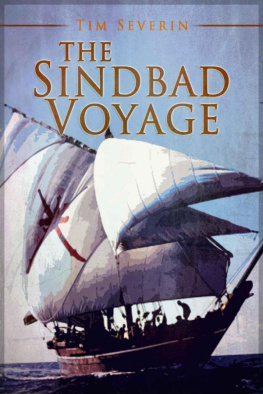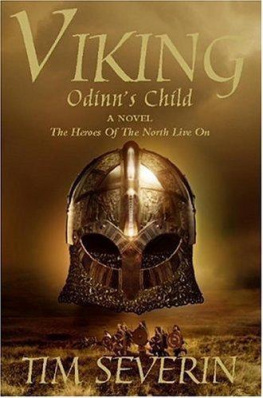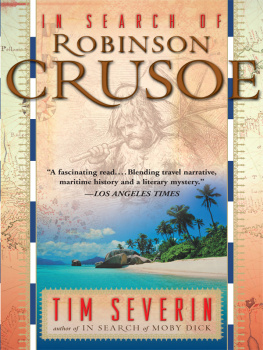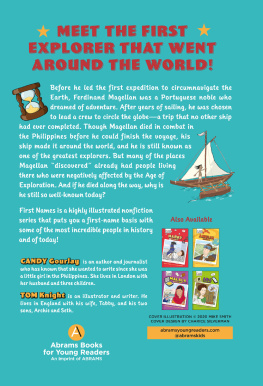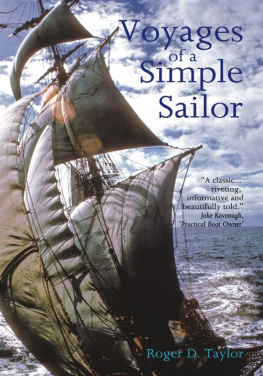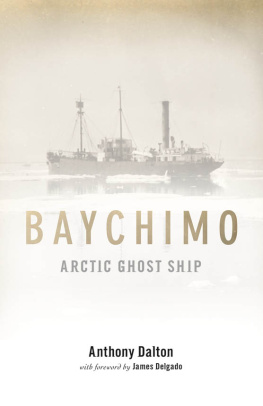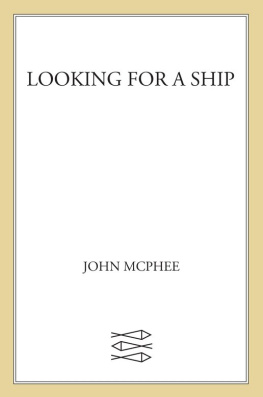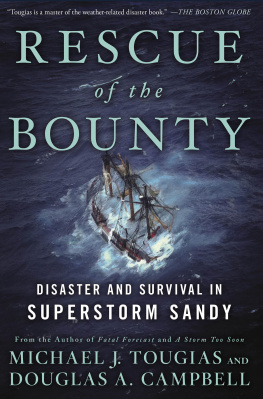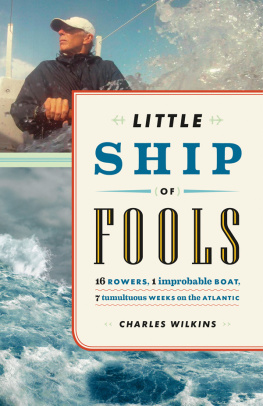Captain :Tim Severin
Omani Sailing Crew -Muscat to Canton
Khamees Humaid al Araimi *Abdullah Mubarak Salim al-Salhi
Musalam Ahmed Saleh al-Shaiady Eid Abdullah Saleh al-Alawy
Khamees Said Sbait al-Mukhaini Saleh Usif Saleh al-Alawy
Jumah Matar Mubarak al-Saad Jumail Marhoon Jameel al-Saad
Specialists
Peter Dobbs: British, diver and weapons specialist- Muscat toCanton
Andrew Price: British, marine biologist - Muscat to Canton
Tom Vosmer: American, radio operator- Muscat to Sri Lanka,detached duties Sumatra, Sumatra to Canton
David Bridges: British, film cameraman and director - Muscat toSumatra, detached duties Sumatra, Singapore to Canton
Terry Hardy: British, sound recordist- Muscat to Sumatra,detached duties Sumatra, Singapore to Canton
Bruce Foster: New Zealand, stills photographer - Muscat to SriLanka
Shanby al Baluchi: Pakistani, 'cook' - Muscat to India
John Harwood: British, marine biologist - Muscat to India
Robert Moore: British, oceanographer - Muscat to India
Trondur Patursson: Danish (Faeroe Islands), artist- Muscat toIndia
Mahomed Ismail: Indian, shipwright - Muscat to India DaveTattle: New Zealand, diver- Muscat to India Ibrahim Hasan: Indian, cook - Indiato Canton
Peter Hunnam: British, marine biologist - India to Sri Lanka,Sumatra to
Canton
Nick Hollis: British, doctor - Sri Lanka to Canton
Tim Readman: British, diver and purser - Sri Lanka to CantonRichard Greenfield: British, stills photographer - Sri Lanka to Canton DickDalley: British marine biologist - Sri Lanka to Canton
Denotes watch leader during part of voyage.
The funds for the Sindbad Voyage were provided by the kindnessof His Majesty Sultan Qaboos bin Said. Official sponsorship came from Oman'sMinistry of National Heritage and Culture, whose Minister, HH Sayyid Faisal al Said, gave his unwavering support to the venture.Rarely can any expedition have received such whole-hearted backing, and I hopethat the success of the Sindbad Voyage repays in some measure this outstandinggenerosity which was in the very best Arab tradition.
It took nearly five years to plan and carry out the voyage, andto present its results in words, pictures and film. During those five years oneremarkably competent person did the work of an entire support team- SarahWaters. She ran the nerve centre of the project. Across her desk passed all thepaperwork. Single-handed she dealt with the telexes, organized and shipped thesupplies, met the aeroplanes, and kept in touch with the families of crewmembers. Anyone who had anything to do with the Sindbad Voyage owes her a greatdebt, particularly myself .
Gulf Air, the airline owned by Bahrain, Oman, Qatar and theUnited Arab Emirates, carried all the stores and personnel for the projectwithout charge - yet another example of Arab munificence. Petroleum DevelopmentOman placed its technical resources at our disposal during the hecticlast-minute preparations before sailing, as well as giving a grant-in-aid toget the film of the voyage started. Their gift was promptly matched by theBritish Bank of the Middle East; and during the voyage I was happy to discoverthat the bank's parent organization, the Hong Kong and Shanghai BankingCorporation, could provide facilities which Sindbad himself would have envied.The bank's hospitality and assistance reached its zenith in Hong Kong, wherethe bank even acted as our local agent.
Only a selection of the characters and events which made up ascomplex a project as the Sindbad Voyage can be included in this single bookabout the venture. Yet I hope that the selection I have made gives a fair - andentertaining - view of the voyage, and will not disappoint anyone who may havebeen omitted. At the end of the book is a list of some of those people whoassisted the project. Even this list is far from comprehensive, but it does givesome idea of just how much help and enthusiasm is needed if one is to build amedieval Arab ship and then sail her all the way to China. To be the captain ofthat ship was an unforgettable experience for me, and I hope that, through thisaccount of the Sindbad Voyage, my readers will enjoy the entire project as muchas I did.
Tim Severin
Courtmacsherry
Co. Cork
Ireland
Spring 1982
The shark must have swallowed the bait in the early hours ofdarkness the previous night, because the animal was utterly exhausted by thetime we noticed the wire-taut fishing line in the first glimmer of dawn. With awhoop of triumph several men ran to the rail of the ship, grabbed the fishingline, and began to haul it in hand over hand. When the 7-foot-long torpedoshape of the shark broke the surface of the sea, the creature began to thrashback and forth in desperation as it suffocated in the thin air. The waterchurned up into a foam around the shark's flailingbody, and as the fishing line was not strong enough to pull the sharkvertically out of the water, a long pole with a crude hook on its end was pokedcautiously towards the writhing animal. The hook slithered back and forth onthe shark's glistening wet skin, seeking one of the vulnerable openings, aneye, a gill slit, or the mouth. But there was an error. Heaving with a finalburst of panic, the shark threw the whole weight of its body down on the polejust as it lay across the fishing line. The taut line snapped under the strain,and the shark fell back into the sea, hung there for an instant, and with aslow exhausted roll sank back into the ocean.
'Blast!' said a voice. 'I was looking forward to fresh sharksteak for breakfast.'
'Did you see the remora fish sticking to its belly?' askedsomeone else. 'It must have been at least r6 inches long.'
'I wonder how long we've been towing him behind us,' said athird voice. 'It looked like a white-tip shark to me.'
The group of men who had been standing at the rail of the shipbegan to disperse. They were a strange-looking band by any standards, I thoughtto myself as I watched them. The colours of their skins ranged from a richebony black to a raw sunburned pink. Most of them were naked to the waist, andall had bare feet. A few wore shorts, but the majority were dressed inloincloths. At least half their number were heavily bearded, and this, togetherwith the fact that they wore turbans and carried sheath knives dangling attheir belts, gave them a distinctly piratical air, so that once again Imarvelled at the romantic, almost unreal, nature of my surroundings. Was Ireally in the twentieth century, or was I imagining myself back in an earliertime? Despite the solid feel of the wooden planking beneath my feet, the wholesituation had a dreamlike quality. A tropical sea of startling blue stretchedout to the horizon on every side, and was marked by the clean wake of the shipdrawn across it. Ahead of the vessel a small flock of seabirds was wheeling andcalling out excitedly as they peered down into the depths, hoping to catch theglint of small fish disturbed by the motion of our passage. A warm monsoonbreeze filled the graceful curves of the three distinctive sails, triangular inshape, which billowed above my head. The largest of these sails was immense, agreat expanse of canvas held aloft by a single spar as long as the shipherself, which slanted dramatically upward at a rakish angle. In the centre ofeach sail was a bright scarlet emblem - two crossed swords and a hooked dagger- which showed that the ship belonged to an Arab sultan, and his country'sflag, green, red and white, fluttered at the ship's flagstaff mounted on therudderhead behind me.

